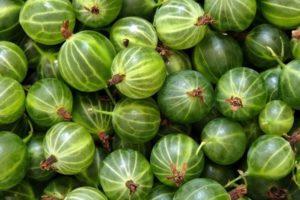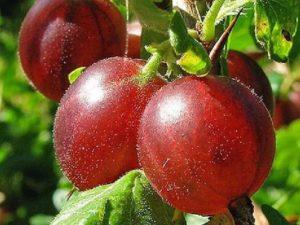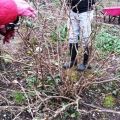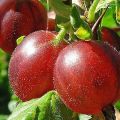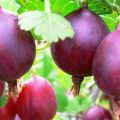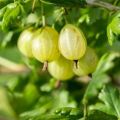Measures to combat powdery mildew on gooseberries with folk and chemical means
People who grow gooseberry bushes often face such a dangerous disease as powdery mildew. Pathology can not only worsen fruiting, but also destroy plants. Therefore, it is worth familiarizing yourself with the most effective measures to combat powdery mildew on gooseberries.
Why does powdery mildew appear
Powdery mildew is a disease that can infect not only gooseberries, but also many other plants. The most suitable time for the development of pathology is late spring, summer and the first half of autumn. In winter, the disease does not develop, since powdery mildew spores winter in the soil. Some gardeners believe that plants can only get sick with false dew on the street, but this is not the case. This pathology is capable of destroying plants that are grown in greenhouses.
Before treating an infected bush, you need to determine the causes of the fungal disease. These include:
- Thickened planting of gooseberry seedlings. This is the main reason why symptoms of the disease begin to appear. Bushes that are planted too close do not have enough feeding. This leads to the fact that the protection of plants against fungal and viral diseases is weakened.
- Improper watering. Some gardeners too rarely water the berries, which leads to the depletion of the bushes.
Factors affecting the development of powdery mildew
There are several factors that cause powdery mildew damage. If the berries are grown in a greenhouse, then a fungal disease may appear due to high temperatures and high humidity. Fungal pathogens of pathology actively develop when the air temperature exceeds 20 degrees, and the humidity level is 85-90%. These are the most favorable conditions under which gooseberry infection begins.
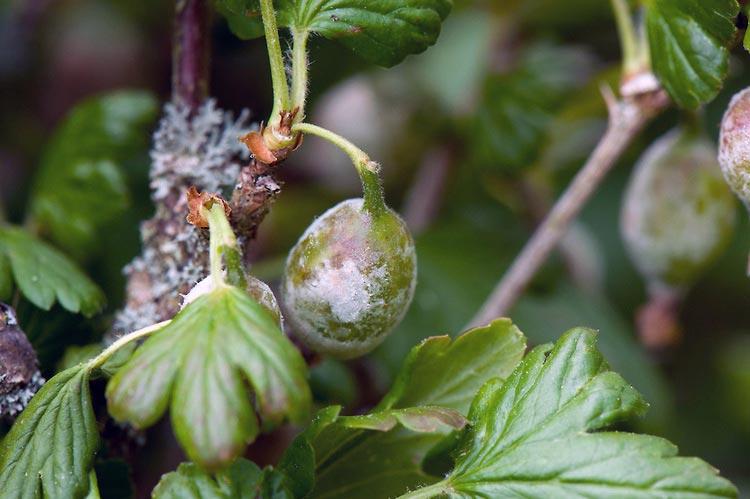
When growing shrubs in open ground, the rate of development of the disease depends on the season and climatic characteristics of the region. Most often, the root and the ground part of the bush are affected by false dew in the southern regions.
In such an area, it often rains, due to which the humidity rises and creates suitable conditions for the development of the fungus.
Another factor due to which the disease can affect plants is the planting site.If the bushes are planted in the lowest parts of the garden, the likelihood that they will get sick is extremely high. The soil in the lowlands is poorly permeable to oxygen and gradually accumulates moisture, which contributes to the appearance of fungi.
How does the disease spread
It is recommended to study in advance the main ways of spreading the fungal disease. Quite often, spores of false dew spread to neighboring plants when they begin to water the infected bush. The causative agents of the disease, along with splashes of water, fall on healthy leaves, after which the infection process begins.
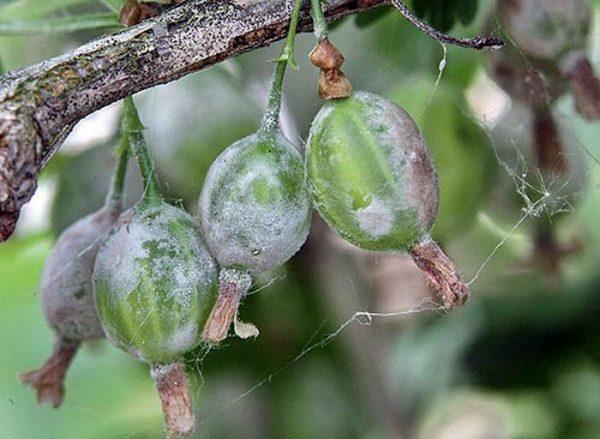
Dry, windy weather also contributes to the spread of the disease. Fungal spores, along with the wind, spread to plants that grow near the affected gooseberry.
Symptoms and signs of the disease
In order to determine in a timely manner that the bushes have symptoms of a fungal disease, you need to familiarize yourself with the most common signs of false dew. There are several symptoms that indicate that the berry is infected:
- White bloom. First, a light and loose bloom appears on the shoots and leaves, which can be cleaned with a cloth in the first days after infection.
- Dark spots. Gradually, the lower and upper leaves begin to become covered with darkish spots, which eventually turn brown. If you do not start treatment in a timely manner, the gray spot will cover the fruits and stems.
- Deformation of the bushes. After a week, infected bushes begin to look unhealthy. Their main stem and side shoots are bent and deformed. In this case, deformation is accompanied by drying out of some branches.
- Twisting the leaves. During the period of active development of false dew, each affected leaf curls and turns yellow. They also become brittle and crumble if accidentally touched.
- Slow ripening of berries. Each infected fruit, which is covered with a dense crust, stops developing and ripening. Gradually, cracks appear on the surface of the berries, due to which they fall from the bushes.

How to deal with powdery mildew
When the first signs of an illness appear, the infected gooseberry must be rescued immediately. To do this, you will have to familiarize yourself with the common methods of treating false dew in order to choose the most effective one.
Store chemicals
Some are interested in how to process gooseberries in the summer. In the fight against many diseases, highly effective chemicals are often used that act immediately after treatment:
- "Topaz". It is the most common chemical used to treat fungal diseases. The drug is used for spraying seedlings at least three times a month.
- "Tilt". A protective agent that contains propiconazole. This substance quickly destroys pathogens and prevents gooseberry infestation.

Folk remedies
Some people do not want to spray the seedlings with chemicals and use alternative methods of treatment instead.
Ash
The use of ash is a common method of eliminating the symptoms of fungal diseases. To prepare a mixture for processing berries, ash in the amount of 800-900 grams is added to 10 liters of water. The bushes are treated with the prepared mixture 2-3 times a week.

Soda
Sometimes gardeners use a mixture of laundry soap and baking soda. When preparing the solution, the following dosage is used: 50 grams of soap is added to 7-8 liters of water, after which soda is poured out.
Sodium hydroxide
Another effective remedy against fungi is calcined sodium. To create a mixture for sprinkling gooseberries, add 10 grams of sodium and 200 milliliters of milk to half a liter of water. The created mixture is sprayed onto each infected leaf and bud.
"Aspirin"
The most affordable remedies include "Aspirin", which is available in almost every home. Three tablets of the drug and copper sulfate are added to 700 milliliters of water. The solution helps to get rid of the early stage of false dew.

Mullein
Until flowering has begun, a mullein mixture is used to eliminate the disease. The substance is diluted with warm water in a ratio of one to three, after which it is insisted for 4-5 days. Before spraying, the liquid is filtered with gauze.
Isopropanol
A medicinal composition is prepared from "Isopropanol", which is sprayed with berries. To create it, 50 grams of cinnamon is added to 650 milliliters of the drug. Spraying is carried out at least once a week.
Physical and agronomic measures
Some use agronomic and physical measures to treat the disease. In this case, instead of spraying, the infected bushes are cut off. If the plant has not been treated for a long time, and it is completely covered with spots, you will have to get rid of it. Such bushes are dug up by the roots and burned.
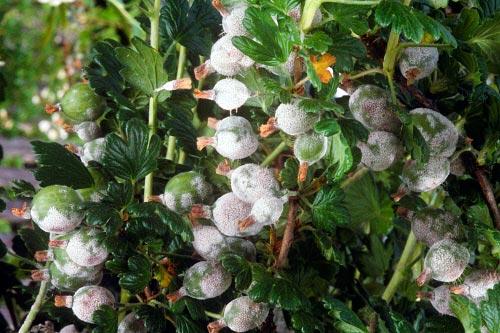
What to do with a powdery mildew-affected crop
Many are interested in whether it is possible to eat gooseberries with powdery mildew. Some argue that you cannot eat such fruits, but this is not the case. Gooseberry harvesting is carried out even if all the berries are covered with bloom. The entire harvested crop will have to be washed and cleaned from plaque before use.
Prevention of the onset of the disease
To grow and harvest a healthy crop, you will have to familiarize yourself with basic preventive measures.
Choosing disease-resistant gooseberry varieties
There are several varieties of gooseberries that are not affected by powdery mildew. These include:
- Neslukhovsky. It is a high-yielding variety that bears fruit in autumn. It is resistant to fungal diseases and low temperatures.
- Cossack. Large-fruited gooseberry, which rarely gets sick and is not attacked by pests. The only serious drawback of the Kazachka is a large number of sharp peaks on the stems.
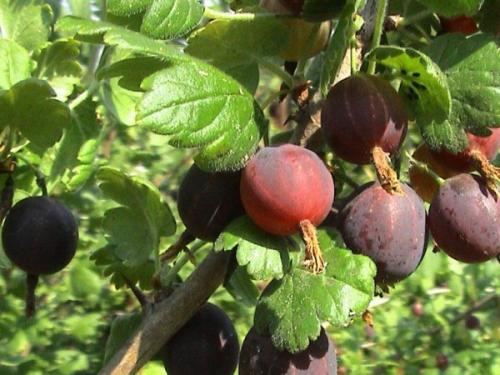
Proper care of gooseberry bushes
Summer is the time when the planted gooseberry bushes must be carefully looked after. When flowers begin to bloom on them and the first berries are tied, watering must be intensified. You will also have to trim and remove excess shoots.
Carrying out preventive treatments
Preventive treatments are needed to protect the berries from false dew. Experts recommend using the fungicidal preparations Fitosporin and Prognoz for treatment, which prevent the development of fungi. A solution containing iodine and baking soda is also considered an effective remedy.

Timely feeding
Without top dressing, the plant will weaken and begin to hurt, so fertilizers are regularly added to the soil. Most often, fresh humus and wood ash are poured into the soil. Mineral fertilizers are also added, which contain potassium, phosphorus and nitrogen.
Conclusion
The most common disease that affects gooseberries is powdery mildew. To cure infected bushes, you need to familiarize yourself with how you can get rid of powdery mildew on gooseberries and what means to use.
